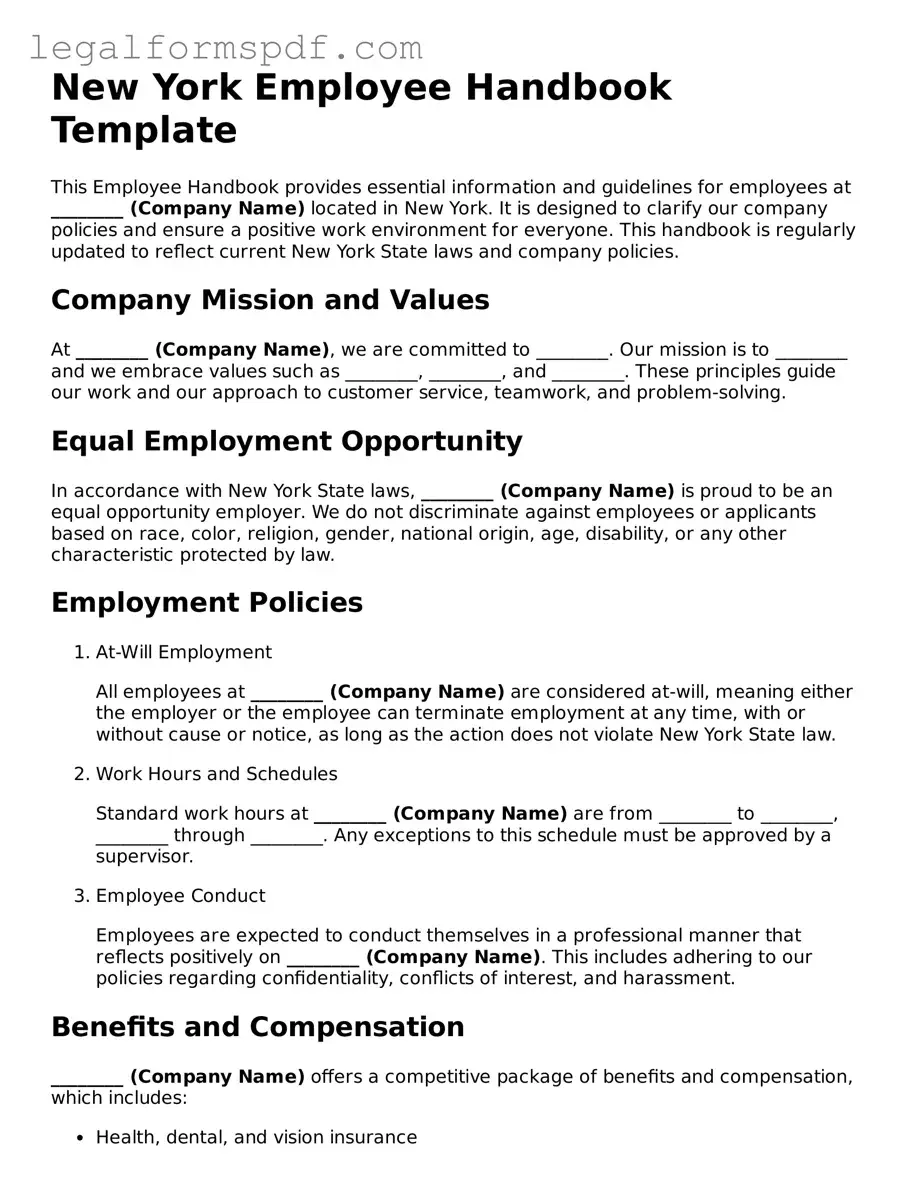New York Employee Handbook Template
This Employee Handbook provides essential information and guidelines for employees at ________ (Company Name) located in New York. It is designed to clarify our company policies and ensure a positive work environment for everyone. This handbook is regularly updated to reflect current New York State laws and company policies.
Company Mission and Values
At ________ (Company Name), we are committed to ________. Our mission is to ________ and we embrace values such as ________, ________, and ________. These principles guide our work and our approach to customer service, teamwork, and problem-solving.
Equal Employment Opportunity
In accordance with New York State laws, ________ (Company Name) is proud to be an equal opportunity employer. We do not discriminate against employees or applicants based on race, color, religion, gender, national origin, age, disability, or any other characteristic protected by law.
Employment Policies
- At-Will Employment
All employees at ________ (Company Name) are considered at-will, meaning either the employer or the employee can terminate employment at any time, with or without cause or notice, as long as the action does not violate New York State law.
- Work Hours and Schedules
Standard work hours at ________ (Company Name) are from ________ to ________, ________ through ________. Any exceptions to this schedule must be approved by a supervisor.
- Employee Conduct
Employees are expected to conduct themselves in a professional manner that reflects positively on ________ (Company Name). This includes adhering to our policies regarding confidentiality, conflicts of interest, and harassment.
Benefits and Compensation
________ (Company Name) offers a competitive package of benefits and compensation, which includes:
- Health, dental, and vision insurance
- Retirement plans
- Paid time off and holidays
- Employee assistance programs
- Other benefits as applicable and subject to change
Health and Safety
Ensuring a safe workplace is a top priority at ________ (Company Name). In compliance with the New York State Safe Workplace Act, we implement rigorous safety protocols and provide training to all employees on these procedures.
Disciplinary Action
Failure to comply with company policies or New York State law may result in disciplinary action, up to and including termination of employment. Disciplinary measures will be fair and consistent with the nature of the offense.
Acknowledgment
All employees are required to sign an acknowledgment form stating they have received, read, and understand the contents of this handbook, and agree to comply with the policies and procedures of ________ (Company Name).
